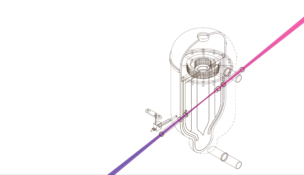TAE Technologies may have just unlocked a new application for fusion power: capturing carbon directly from the atmosphere.
This week, the California fusion startup signed a memorandum of understanding with Oxy Low Carbon Ventures to look into supplying fusion power and heat to direct air capture (DAC) facilities that would filter carbon emissions straight out of the atmosphere. The deal gives TAE a chance to show that its fusion tech can be reliable and cost-effective for Oxy’s purposes.
Capture the imagination: In the global fight against climate change, no stone can be left unturned. Direct carbon capture stands out as an obvious stone—after all, if excessive carbon in the atmosphere is the problem, why not just take it out?—but it’s also a challenge where making an impact is energy- and cost-intensive.
So why bother?
- Oxy Low Carbon Ventures is owned by Occidental Petroleum, the largest oil producer in the Permian Basin and owner of drilling ops in the US, Middle East, and Colombia.
- There’s money to be made in the carbon credit market by selling DAC to oil and gas companies looking to offset their emissions.
- Offsetting carbon emissions through DAC opens the door to more drilling—and more revenue on all sides.
Oxy is working on a handful of DAC projects, including the billion-dollar Stratos facility in the Permian Basin, and it’s planning on building a lot more. With the energy demands of Oxy’s direct carbon capture, fusion is only a piece of the puzzle—but it could be an important one.
“Fusion is a promising technology that advances our efforts to explore sustainable energy sources as we progress with commercializing large-scale Direct Air Capture as a critical climate solution,” VP of power development at Oxy Low Carbon Ventures, Frank Koller, said in a release.
The deal at hand: TAE plans to suss out how its aneutronic fusion concept, Copernicus, could support Oxy’s DAC facilities. TAE will examine approaches that optimize for reliability, safety, and cost-effectiveness. A commercial application is likely many years away—both DAC and fusion have a lot of maturing to do—but if successful, fusion could prove to be a major enabler of carbon-capture technology.
Lead Reporter of Ignition





